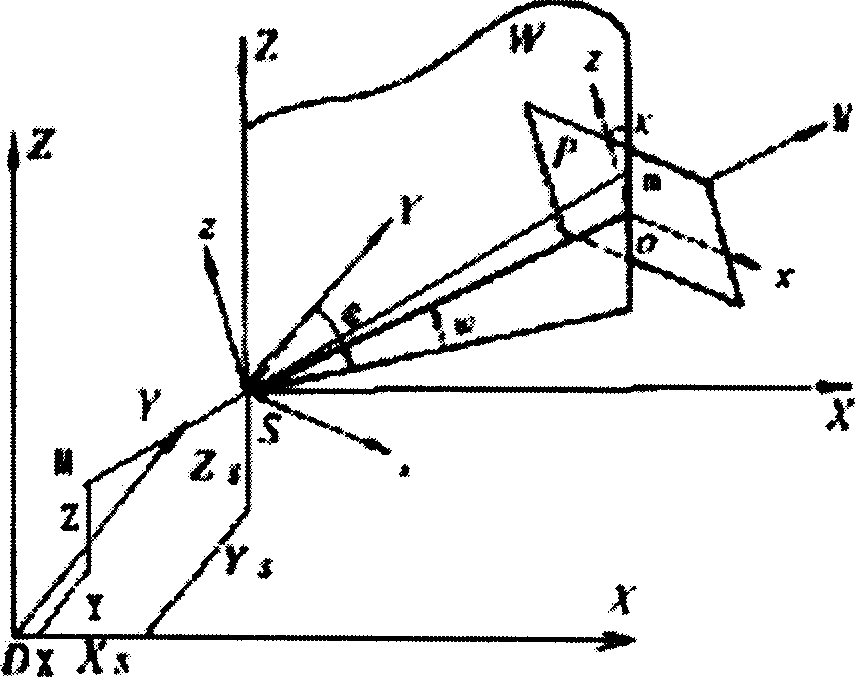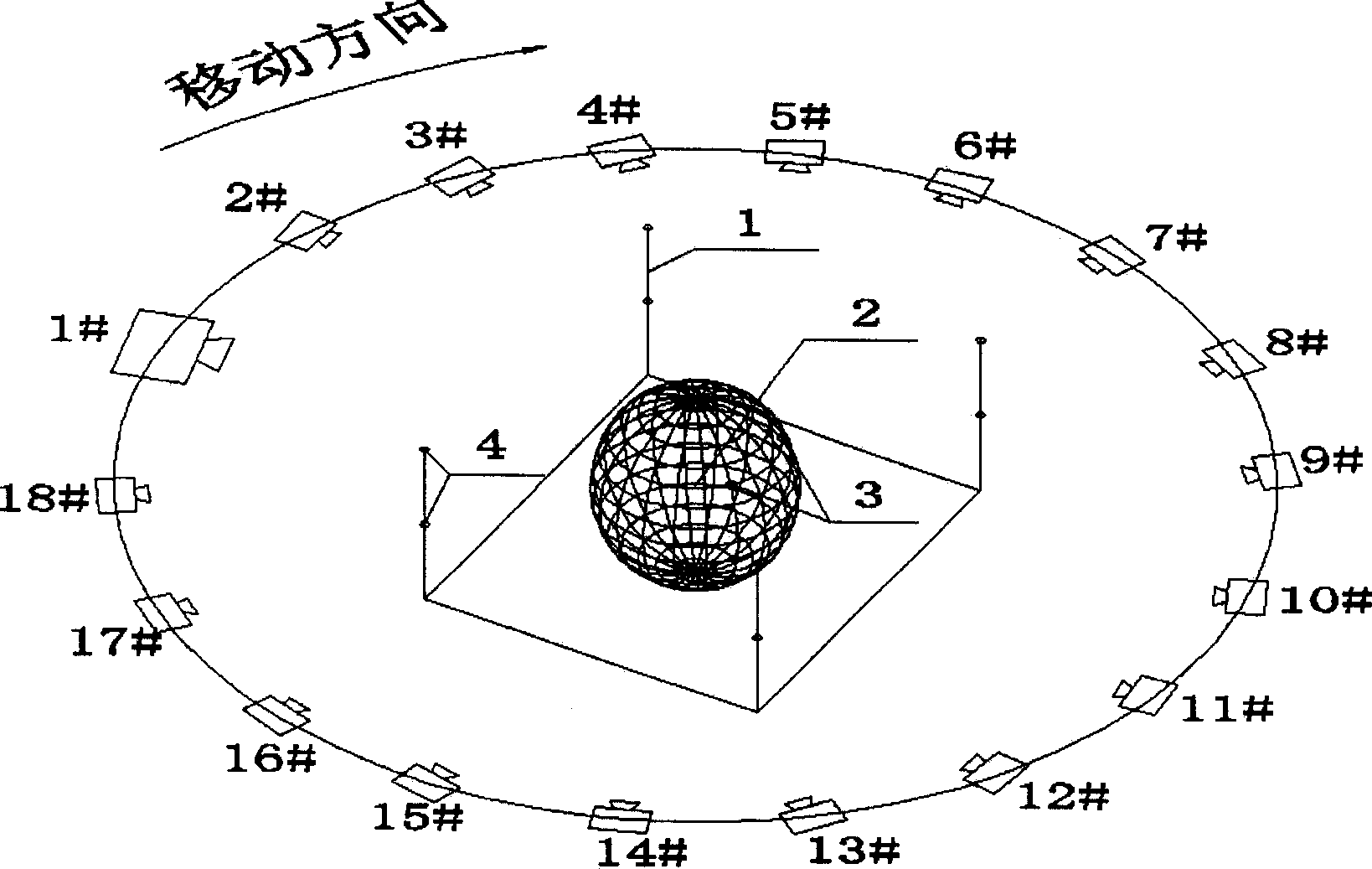EEG electrode space positioning method based on up shot measure
A close-range photography and spatial positioning technology, which is applied in 3D image processing, 2D image generation, image data processing, etc., can solve problems such as emission magnetic field distortion, limited measurement accuracy, and high operating environment requirements
- Summary
- Abstract
- Description
- Claims
- Application Information
AI Technical Summary
Problems solved by technology
Method used
Image
Examples
Embodiment Construction
[0021] exist figure 1 , S is the photographic center, and the coordinates are (X s , Y s ,Z s ); M is the control point or the point to be measured, and the actual position of the coordinates is (X, Y, Z); m is the principal point of imaging, and the coordinates are (x, y). In the inverse problem method, it is the image coordinate of the calibration point , in the direct problem method, it is the photo point coordinates; when solving the inverse problem, the image coordinates (x, y), coordinates (X, Y, Z) are known, and when solving the direct problem, the image coordinates (x, y) is known, the coordinates (X, Y, Z) are not known. In the figure, P is the image plane, and W is a plane perpendicular to the x-z plane and forming an angle K with the P plane.
[0022] exist figure 2 Among them, 1 is a calibration object, 2 is a calibration point, 3 is an electrode to be measured, 4 is a point to be measured, 5 is a non-measurement camera, and marks 1-18 are different shooting...
PUM
 Login to View More
Login to View More Abstract
Description
Claims
Application Information
 Login to View More
Login to View More - R&D
- Intellectual Property
- Life Sciences
- Materials
- Tech Scout
- Unparalleled Data Quality
- Higher Quality Content
- 60% Fewer Hallucinations
Browse by: Latest US Patents, China's latest patents, Technical Efficacy Thesaurus, Application Domain, Technology Topic, Popular Technical Reports.
© 2025 PatSnap. All rights reserved.Legal|Privacy policy|Modern Slavery Act Transparency Statement|Sitemap|About US| Contact US: help@patsnap.com



